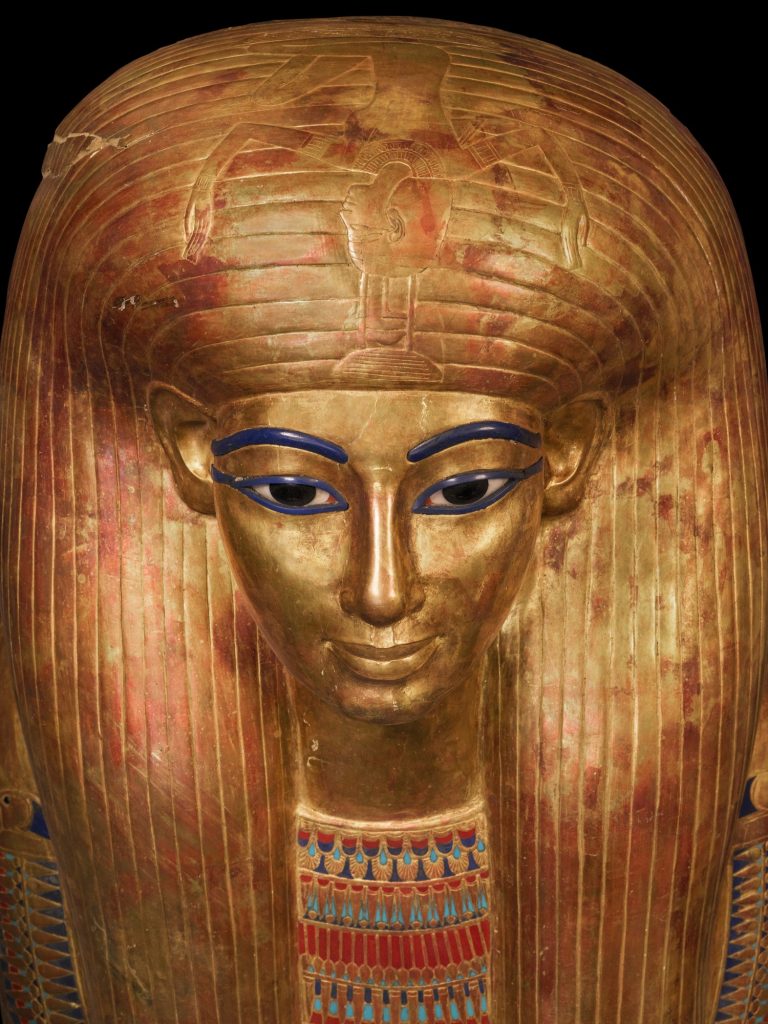The exhibition “Treasures of the Pharaohs”, on display in Rome from October 24, 2025 to May 3, 2026, will be a once-in-a-lifetime experience.
Located in the Scuderie (once the stables) of Rome’s Quirinal Palace, first the popes’ summer palace, then the residence of Italy’s royal family and, since 1946 that of Italy’s President, this is the first time ever that Egypt has mounted an exhibition of its ancient artifacts in Rome.

In fact, it is only the second time that Egypt has lent many of its ancient artifacts to Italy. The first exhibition, “The Pharaohs” was held in 2002 at the Palazzo Grassi in Venice. But while the Venice exhibition of some 80 artifacts focused on the role of kingship in the New Kingdom (1550-1070 BC), the period known for its peak of Egyptian power and prosperity, the 130 artifacts of “Treasures of the Pharaohs” will explore in six sections the complexity of Egyptian society, not only royal power and the divine authority of the pharaohs, but also daily life, religious beliefs, funerary customs and artistic achievements over 3,000 years. Thus, it will span the entire arc of ancient Egyptian history, from the Early Dynastic Period (c. 3150-2890 BC) to the Late Period (664-332 BC), and will include archeological discoveries never before shown outside Egypt, on loan from The Egyptian Museum in Cairo’s El-Tahrir Square and the Luxor Museum.
It will also include recent discoveries, most notably, from the “Golden City”, unearthed by an Egyptian team led by the world-famous archeologist Zahi Hawass in Luxor in 2020. This vast urban settlement dates to the reigns of Pharaohs Amenhotep III (r. 1386-1349 BC), who was nicknamed “The Magnificent” and considered one of the greatest pharaohs because of his military prowess, and of his son Akhenaten (r. 1353-36 or 1551-33), best-known as the husband of Nefertiti and father of Tutankhamun. This final section will offer an unprecedented glimpse into the lives of artisans and the craftsmen who built Egypt’s grand monuments including their tools, ceramics, amulets, and personal belongings. In addition, the Egyptian Museum in Turin will loan the Mensa Isiaca or Bembine Tablet, the most prized object in its collection, and several still-to-be-chosen treasures, which have never been loaned before.
Among the highlights of “Treasures of the Pharaohs” are: the schist Triad of Menkaure, showing the pharaoh who lived over 4,500 years ago and commissioned one of the three great pyramids of Giza. A monumental sculptural masterpiece from the Old Kingdom, Menkaure is flanked by the goddess Hathor and the protective deity of the Theban region, underscoring the divine mandate of his rule.

Other highlights are the lid of gilded wooden coffin of Queen Ahhotep, adorned entirely in gold, a magnificent example of New Kingdom (c. 1550-1070 BC) funerary art. Also belonging to the queen is the legendary “Necklace of Golden Flies”, an honorary military distinction reserved for Egypt’s greatest warriors, as she commanded the Egyptian army before her son Ahmose I was old enough.
A symbol of immortality, gold was sacred to the solar deity Ra and the metal of many other treasures here: the intricate gold funerary mask of the Pharaoh Amenemope (r. c. 993-984 BC); the golden coffin lid of Thuy, grandmother of Akhenaten, with its intricate decorations and hieroglyphic inscriptions; and the golden funerary covering of Pharaoh Psusennes I, one of the most fascinating relics of the Third Intermediate Period (1070-664 BC). It’s finely decorated with sacred symbols intended to grant the pharaoh protection in the afterlife.
Also on display are imposing statues. One is of Sennefer, a nobleman who was the mayor of Thebes and “Overseer of the Granaries and fields of Cattle of Amun.” Being a favorite of Amenhotep II, he accumulated great wealth and was allowed to place this gray granite statue, on display here, of himself and his wife Senetney and their daughter Mutnofret in the Temple of Karnak. Another two imposing basalt statues are of Ramses VI (r. c.1180-1136 BC) and Thutmose III (r. c.1481-1425 BC), the stepson and co-ruler of the domineering Hatshepsut, one of only a few female pharaohs, not to omit the exquisite royal jewelry, all revealing the extraordinary artistic sophistication and profound spirituality of ancient Egypt.
The exhibition will also feature a richly illustrated catalog by Hawass, published in Italian and English editions by Allemandi Editore (the price still to be determined). Tickets are already on sale from the Scuderie’s website. After you’ve clicked on the site, follow instructions to register, pay, and receive your tickets.
Should you need help, you can telephone vivaticket at 011-39-0292897722 Monday-Friday from 8:30 AM-7 PM and Saturday 8:30 AM-6 PM Saturdays Italian hours.












